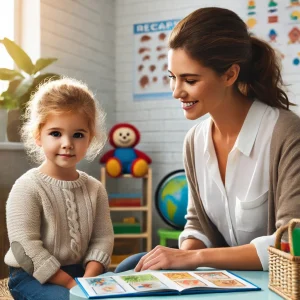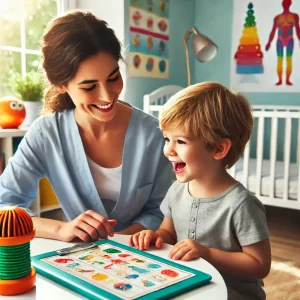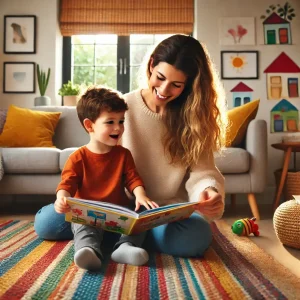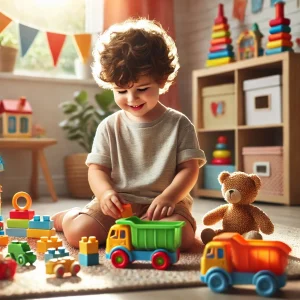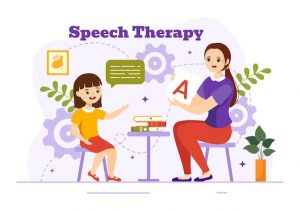Supporting Emotional Regulation in Kids: Simple Ways to Help
Last Updated: September 26, 2024
Emotional regulation might sound like a complex term, but it’s simply about how well a child can manage their emotions in different situations. Think of it as their ability to stay calm when they’re frustrated, express their excitement without going overboard, or bounce back from disappointment. It’s a crucial skill that affects how children interact with others, handle challenges, and even how they learn in school. When kids struggle with emotional regulation, you might notice things like frequent tantrums, trouble calming down after being upset, or difficulty sharing their feelings in a healthy way.
Why does this matter so much?
Imagine trying to solve a puzzle while feeling overwhelmed or dealing with a friend who’s angry but can’t explain why. Emotional regulation helps kids navigate these everyday challenges, leading to better relationships, improved focus, and a happier, more balanced life overall.
What is Emotional Regulation in Kids?
Emotional regulation is all about how kids manage their feelings. Simply put, it’s the ability to understand, express, and control emotions in a way that’s appropriate for the situation. For instance, a child who can calmly ask for a turn with a toy instead of grabbing it or a kid who takes deep breaths when they’re upset instead of yelling—these are examples of emotional regulation at work.
Also Read: Emotional Regulation for Kids: Easy Tips and Activities
But why is this so important for a child’s development?
Well, emotional regulation is like a foundational skill that impacts many areas of a child’s life. It helps them build better relationships with friends, succeed in school, and feel more confident in new or challenging situations. Kids who can regulate their emotions tend to handle stress better, bounce back from setbacks more quickly, and are generally happier because they aren’t constantly overwhelmed by their feelings.
Now, how can you tell if your child is effectively managing their emotions or if they might need a bit more support? Here are some key signs:
- Signs of Effective Emotional Regulation:
- They can calm themselves down when they’re upset.
- They express their feelings with words rather than actions, like talking about being sad instead of hitting.
- They can wait their turn or handle not getting what they want right away without a major meltdown.
- They adjust their behavior depending on the situation, like being quieter in a library or more energetic at the playground.
- Signs of Ineffective Emotional Regulation:
- Frequent tantrums or outbursts over small frustrations.
- Difficulty calming down once they’re upset or angry.
- Trouble expressing emotions in words, leading to actions like hitting, crying, or withdrawing.
- Reacting impulsively without thinking about the consequences, like shouting in class or refusing to share.
Also read: Fun 7 Activities to Boost Emotional Regulation in Young Children
Why Emotional Regulation Matters
Emotional regulation is more than just a skill—it’s a cornerstone of a child’s overall development. When kids learn how to manage their emotions effectively, it opens up a world of benefits that can positively shape their future. Let’s dive into why emotional regulation matters so much and how it can make a big difference in your child’s life.
1. Improved Social Skills:
Children who can regulate their emotions tend to have better social interactions. They’re more likely to play well with others, share, and resolve conflicts peacefully. Imagine a child who calmly talks through a disagreement with a friend instead of resorting to tears or anger. This ability to navigate social situations smoothly helps them build strong, healthy relationships, which is a critical part of growing up.
2. Better Academic Performance:
You might not immediately connect emotions with academics, but they’re closely linked. A child who can manage stress, frustration, or excitement is more focused and ready to learn. For instance, handling the disappointment of a tough test or staying calm during a group project can boost their overall performance in school. Emotional regulation skills help kids stay attentive, follow instructions, and cope with the ups and downs of academic life.
3. Reduced Behavioral Issues:
When kids struggle with emotional regulation, it can often lead to behavioral problems like aggression, defiance, or frequent meltdowns. On the other hand, children who learn to control their emotions are less likely to act out. They can express their feelings with words, understand the impact of their actions, and are generally more cooperative both at home and in school. This not only makes day-to-day life smoother but also creates a more positive environment for everyone involved.
4. Long-Term Impact on Mental Health and Well-being:
The benefits of good emotional regulation extend far beyond childhood. As kids grow, these skills continue to play a vital role in their mental health and well-being. Adults who are good at regulating their emotions often experience lower levels of anxiety and depression, better stress management, and overall greater life satisfaction. Essentially, teaching kids to handle their emotions now sets them up for a healthier, happier future.
Factors Affecting Emotional Regulation in Children
Emotional regulation doesn’t develop in a vacuum. A variety of factors can influence how well a child learns to manage their emotions. Understanding these factors can help parents and caregivers better support their child’s emotional growth. Let’s explore some of the key elements that play a role:
1. Age and Emotional Regulation:
- Emotional regulation develops progressively with age.
- Toddlers and preschoolers often display emotional challenges due to ongoing brain development.
- Common behaviors include tantrums, which typically decrease as children reach school age.
2. Child’s Temperament:
- Each child has a unique temperament influencing their emotional response.
- Children with calm temperaments may navigate stress better than those who are reactive.
- A reactive child might struggle more in stressful situations compared to their easygoing peers.
3. Influence of Environment:
- A child’s environment crucially shapes their ability to regulate emotions.
- Supportive and nurturing settings enhance emotional expression and management.
- Chaotic or stressful environments can impede effective emotional regulation.
4. Family Dynamics and Emotional Learning:
- Family dynamics play a crucial role in teaching emotional regulation.
- Observing healthy emotional responses from adults can encourage similar behaviors in children.
- Exposure to family conflicts or inconsistent caregiving can hinder emotional development in children.
Also read: Emotional Regulation Tips for Children with Autism and ADHD
5. The Role of Stress, Sleep, and Nutrition:
- Stress: High levels of stress can overwhelm a child’s ability to regulate emotions. Whether it’s due to changes in routine, school pressure, or family issues, stress can lead to increased anxiety, mood swings, and difficulty coping with everyday challenges.
- Sleep: A good night’s sleep is crucial for emotional regulation. Children who are well-rested are generally better equipped to handle their emotions. On the flip side, lack of sleep can lead to irritability, difficulty concentrating, and heightened emotional responses.
- Nutrition: What children eat can also affect their mood and behavior. A balanced diet with regular meals helps stabilize blood sugar levels, which can prevent mood swings and support overall emotional well-being. Poor nutrition, on the other hand, can lead to issues like fatigue and irritability, making it harder for kids to keep their emotions in check.
Strategies for Supporting Emotional Regulation in Kids
Helping your child develop emotional regulation skills can feel like a big task, but breaking it down into practical steps makes it manageable and rewarding. Here are some effective strategies to guide you along the way.
1. Teaching Emotional Awareness:
Recognizing and naming emotions is the first step in emotional regulation. When kids can identify what they’re feeling, it becomes easier for them to manage those emotions. Imagine being upset but not knowing why—that’s often how it feels for children who can’t put their feelings into words.
- Why It’s Important: Emotional awareness helps children make sense of their experiences and feel more in control. It also improves their ability to communicate with others, which is crucial for healthy relationships.
- Simple Activities: Use emotion cards or apps that show different facial expressions and ask your child to identify the emotions. You can also play games like “Feelings Charades,” where family members act out emotions for others to guess. These fun activities make learning about emotions engaging and less intimidating.
2. Modeling Emotional Regulation:
Kids learn a lot by watching the adults around them. When you handle your own emotions calmly, you’re teaching your child how to do the same. It’s not about being perfect—it’s about showing them that it’s okay to feel and how to handle those feelings constructively.
- How to Model Calm Responses: When you’re stressed, instead of snapping or shutting down, try talking through your feelings out loud. For example, “I’m feeling frustrated right now, so I’m going to take a deep breath.” This not only models a healthy response but also normalizes the idea that everyone has challenging emotions sometimes.
- Impact of Adult Behavior: Children who see their parents or caregivers managing emotions well are more likely to mimic those behaviors. On the flip side, if kids see adults reacting impulsively or with anger, they might think that’s an acceptable way to handle emotions. By modeling calmness and control, you set a powerful example that they can follow.
3. Providing a Safe and Supportive Environment:
Creating a safe space for your child to express their feelings is essential for their emotional growth. When kids feel secure, they are more likely to open up about what they’re going through.
- Stable Routines: Consistent routines help children feel grounded and less anxious. Knowing what to expect can reduce emotional overwhelm, making it easier for them to manage their feelings.
- Validating Feelings: Always acknowledge your child’s emotions, even when they seem irrational. Phrases like “I can see you’re really upset about this” or “It’s okay to feel angry right now” go a long way in making your child feel heard. Avoid dismissing their feelings or rushing to fix the problem; sometimes, all they need is a listening ear.
4. Practicing Mindfulness and Relaxation Techniques:
Mindfulness and relaxation techniques are great tools for helping kids manage their emotions in the moment. They teach children to pause and reflect before reacting.
- Age-Appropriate Exercises: Introduce simple mindfulness activities like deep breathing exercises, where they breathe in like they’re smelling a flower and breathe out like they’re blowing out a candle. Guided imagery, where kids imagine a calm and happy place, can also be soothing.
- Benefits of Regular Practice: Regular mindfulness practice can improve self-control, reduce stress, and promote a sense of calm. Even just a few minutes a day can make a significant difference in how your child handles their emotions.
5. Encouraging Problem-Solving Skills:
Problem-solving is another key component of emotional regulation. Teaching kids to approach challenges with a solution-focused mindset helps them feel more capable and less overwhelmed by their emotions.
- How to Teach Problem-Solving: Guide your child through a simple process: Identify the problem, think of a few solutions, choose one, and try it out. If it doesn’t work, they can try another solution. This approach empowers kids to take charge of their feelings instead of feeling powerless.
- Role-Playing Scenarios: Use role-playing to practice problem-solving in a low-pressure setting. For example, if your child gets upset when they lose a game, role-play that scenario and work together to find a calm response. This not only builds their skills but also makes them feel supported in learning how to handle difficult emotions.
Strategies for Supporting Emotional Regulation in Kids
| Strategy | Activities | Description | Benefits |
|---|---|---|---|
| Teaching Emotional Awareness | Emotion cards, feelings charades, emotion charts | Use visual tools like emotion cards and charts, or play games like feelings charades to help kids identify and express their emotions. These activities make it easier for kids to connect words to their feelings, promoting better emotional understanding. | Helps children recognize and name their emotions, making it easier to manage them. |
| Modeling Emotional Regulation | Demonstrating calm responses, talking through emotions | Show calm behavior during stressful moments and talk out loud about your own emotional management strategies (e.g., “I’m feeling frustrated, so I’m going to take a deep breath”). This models healthy coping mechanisms for children to imitate. | Provides a positive example for children to follow, reinforcing calm and controlled responses. |
| Providing a Safe Environment | Establishing consistent routines, validating feelings | Create a predictable daily routine and provide a safe space where children feel comfortable expressing their emotions without judgment. Acknowledge their feelings with phrases like, “It’s okay to feel upset.” | Creates a sense of security and stability, which helps children feel more in control of their emotions. |
| Mindfulness Techniques | Deep breathing exercises, guided imagery, simple meditation | Introduce simple mindfulness exercises such as deep breathing (e.g., “smell the flower, blow out the candle”) or guided imagery where children imagine a peaceful scene. These techniques help children focus and calm their minds. | Reduces stress, enhances self-control, and improves focus, helping children manage their emotions better. |
| Problem-Solving Skills | Role-playing, breaking down problems into steps, solution brainstorming | Use role-playing to practice handling difficult situations or teach a step-by-step approach to problem-solving: identify the problem, brainstorm solutions, choose one, and try it out. | Empowers children to take charge of their emotions by equipping them with practical skills to handle challenges, reducing anxiety and building confidence. |
Read more: Emotional Regulation in Children: A Parent’s Guide to Helping
Tips for Parents and Caregivers
Supporting your child’s emotional regulation journey is not just about teaching skills—it’s also about creating an environment that nurtures their growth. Here are some practical tips for parents and caregivers to help their children develop strong emotional regulation skills.
1. Consistency and Routine:
Consistency and routine are like anchors for children. When kids know what to expect, they feel more secure, which can significantly reduce anxiety and emotional outbursts.
- How Consistency Helps: Daily routines, like regular meal times, bedtimes, and structured playtime, provide a predictable environment that helps children feel safe and in control. This stability allows them to manage their emotions better because they aren’t constantly dealing with unexpected changes. For example, a regular bedtime routine that includes quiet time, reading, and lights out at the same time every night can make winding down easier and help them sleep better, which in turn supports their emotional health.
2. Positive Reinforcement:
Positive reinforcement is a powerful tool in teaching kids self-regulation. It’s all about celebrating the small wins and encouraging your child when they handle their emotions well.
- Using Praise and Rewards: Simple praises like “Great job staying calm when you were upset!” or “I’m proud of how you talked about your feelings” can boost your child’s confidence and motivate them to keep trying. You can also use rewards like stickers, extra playtime, or a special activity as incentives for displaying good emotional regulation. The key is to focus on reinforcing the behavior you want to see more of, rather than just correcting the missteps.
3. Staying Patient and Supportive:
Emotional regulation is a skill that takes time to develop, and it’s completely normal for kids to have setbacks along the way. Your patience and understanding play a crucial role in supporting their progress.
- Importance of Patience: It’s easy to get frustrated when your child has a meltdown or acts impulsively, but remember that they’re still learning. By staying calm and offering support, you’re showing them that it’s okay to struggle and that you’re there to help them through it. Offer gentle reminders about the strategies they’ve learned and provide comfort when they need it. Your steady presence reassures them that they’re not alone in navigating their emotions.
4. Collaborating with Schools and Therapists:
Sometimes, supporting your child’s emotional regulation goes beyond what you can do at home. Working with your child’s school and, if needed, a therapist can provide additional layers of support.
- How to Collaborate Effectively: Communicate regularly with your child’s teachers to understand how they’re managing emotions in the school environment. Share what works at home and ask about strategies the school uses. If your child sees a therapist, keep them in the loop about any challenges or progress you observe. This collaborative approach ensures that everyone involved in your child’s life is on the same page, working together to provide consistent support.
Conclusion
Supporting your child’s emotional regulation is a journey that requires patience, consistency, and understanding from both parents and caregivers. As we’ve explored in this article, emotional regulation is crucial for a child’s well-being, and simple steps like teaching kids to recognize their feelings, modeling calm behavior, and maintaining routines can significantly aid their emotional growth. Every child progresses at their own pace, but with your encouragement and positive reinforcement, they can thrive. For expert guidance tailored to your child’s needs, visit Wellness Hub for valuable resources and professional support. Empower your child today for a healthier, happier tomorrow!
Frequently Asked Questions:
1. What is emotional regulation in kids?
Emotional regulation in kids is the ability to understand, express, and manage their emotions in healthy ways. It involves recognizing feelings, responding appropriately, and staying calm during challenging situations.
2. Why is emotional regulation important for children?
Emotional regulation is important because it helps children build better relationships, succeed in school, and handle everyday challenges with confidence. It also lays the foundation for good mental health and well-being as they grow.
3. What are common emotional regulation challenges in children?
Common challenges include tantrums, impulsive reactions, and difficulty calming down after being upset. These behaviors are typical in younger children but can improve with guidance and support.
4. How can I help my child learn emotional regulation?
You can help by teaching your child to recognize and name their emotions, modeling calm behavior, creating consistent routines, and practicing mindfulness exercises. Positive reinforcement and patience are also key to supporting their emotional growth.
5. How do routines help with emotional regulation?
Consistent routines provide a sense of stability and predictability, which helps children feel more secure and in control. This makes it easier for them to manage their emotions and reduces anxiety.
6. What role does positive reinforcement play in emotional regulation?
Positive reinforcement, such as praise and rewards, encourages children to repeat positive behaviors like staying calm or expressing emotions with words. It builds their confidence and motivates them to keep improving.
7. Can mindfulness help my child with emotional regulation?
Yes, mindfulness exercises like deep breathing, guided imagery, and other relaxation techniques can help children calm their minds and bodies, making it easier for them to manage strong emotions.
8. How can I collaborate with my child’s school to support emotional regulation?
Working closely with your child’s teachers can ensure consistent strategies are used both at home and school. Regular communication with educators and sharing effective techniques can create a supportive environment for your child.
9. When should I seek professional help for my child’s emotional regulation?
If your child’s emotional challenges are affecting their daily life significantly or if typical strategies aren’t helping, it may be beneficial to seek guidance from professionals. Services like those offered at Wellness Hub provide tailored support for emotional regulation.
10. What are some activities to teach emotional awareness to kids?
Activities like emotion cards, feelings charades, or drawing emotions can help children recognize and name their feelings. These simple and engaging activities make learning about emotions fun and approachable, helping kids better understand and manage their emotional responses.
About Author:
Lasya Vooturi,
Clinical Psychologist (A) & Behavioral Therapist
Lasya holds a Professional Diploma in Clinical Psychology from Amity University, where she deepened her understanding of psychological principles from March 2023 to March 2024. With over a year of dedicated experience as a Behavioral Therapist, Lasya has honed her skills in applying effective therapy techniques tailored to individual needs. Fluent in Telugu, Hindi, and English, she is adept at connecting with a diverse range of clients, ensuring comprehensive communication and understanding. Lasya’s approach is grounded in empathy and scientific rigor, making her a trusted ally in navigating mental health challenges.
Book your Free Consultation Today
Parent/Caregiver Info:
Client’s Details:
* Error Message


